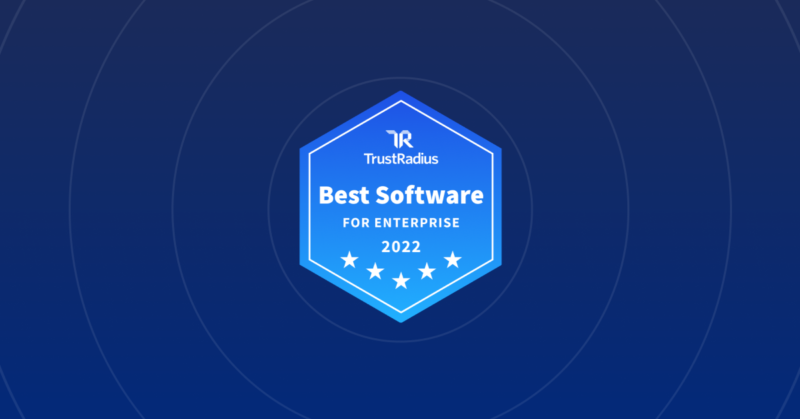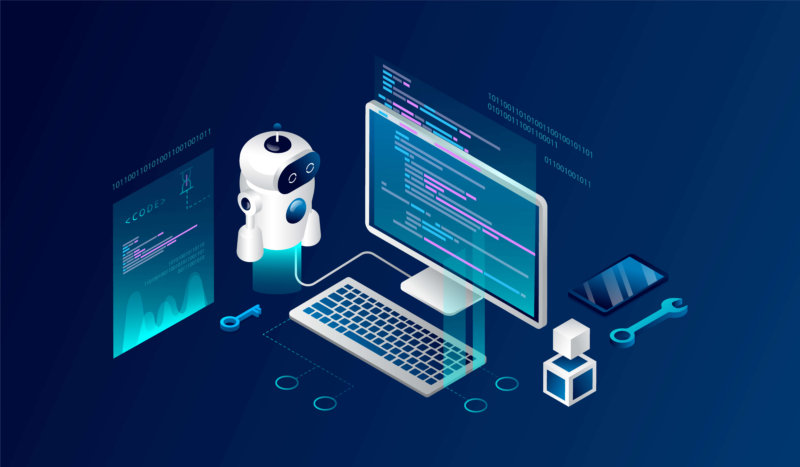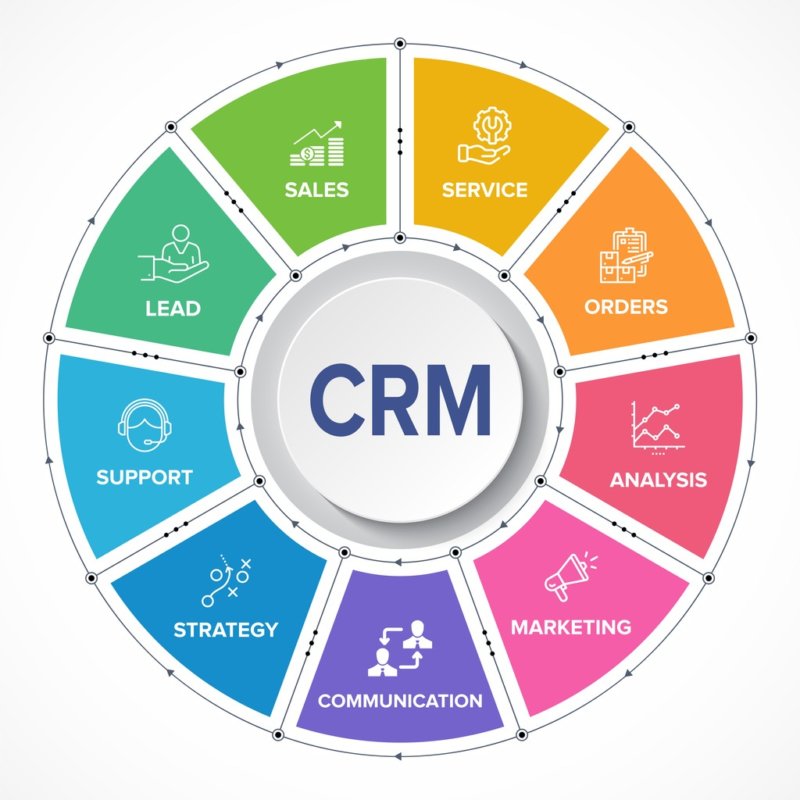B2B Connection
Information and resources for technology buyers
Recognizing the best software products based on their customer satisfaction, performance via reviews, and enterprise market fit.
The software company behind the red fedora is one of many networks of amazing production solutions for DevOps teams. From managing cloud computing to software development, Red Hat can be a comprehensive tool for the big three cloud providers. Whether you are a major enterprise or an indie developer, Red Hat has an insane amount of tools and resources for innovators. They are a great choice for Linux dev teams having built incredible infrastructure on the open-source operating system (OS). What is Red Hat? Red Hat is a powerful and relevant open-source software developer for over 20 years. The prolific giant IBM acquired them in 2019 for over $30 billion, but they still maintain their independence as a company. The majority of their products have open-source code so they’re easily customizable. They also produce free open +-source downloads of their products and sponsored open-source projects. The company has solutions for IT automation, modern cloud architecture, and developer teams building apps with cloud providers. Some of their robust services include operating systems, and virtual machines (VMs). Some of their products include the Red Hat Enterprise Linux Developer Suite, the Red Hat Ansible Automation Platform, and Red Hat OpenShift for multi-cloud deployment. […]
If you are looking for a customer relationship management (CRM) solution that can bridge workflow gaps for you, then Salesforce Customer 360 has you covered. Customer 360 is a popular CRM that gives you impressive reach and visibility into the way your customers relate to your product. Salesforce Customer 360 can help you put your best foot forward with current and potential customers. What is Salesforce Customer 360? Salesforce Customer 360 is a complete and powerful CRM system that offers sales and service tools. It handles customer data, tracks leads, and streamlines workflows. It will help increase productivity, simplify workflows, and manage tasks effectively. The heart of Customer 360 is the Salesforce Sales Cloud and Service Cloud bundles. They give your team everything they need to deliver excellent service to customers. Each cloud product integrates together seamlessly, and all tools can be accessed from your dashboard or the 360 mobile app. Salesforce goes over its major goals and core values with Customer 360 in this video. The Sales cloud specializes in streamlining the sales process. It offers sales engagement and insight tools to help grow your business. You’ll be able to detect unique leads and create segmented profiles from them. […]
Big data is being collected at such exponential rates that traditional IT approaches are struggling to keep up. This is where artificial intelligence for IT Operations, or AIOps comes into play. AIOPs platforms use machine learning to collect and analyze big data from various sources. This effectively increases the organization’s infrastructure visibility and allows IT teams to automate processes such as alert handling. With AIOPs, IT teams can manage this large influx of data being generated and produce actionable insights for the enterprise as a result. Check out our post below to learn more about how AIOps works and what it can do for you: AIOps for Enterprises AIOPS tools are as varied and specialized as the hoards of information they help you manage. The options below can provide tools to quickly address problems and potentially spot them before they start. It is essential to find the software best-suited to your specific needs. The options covered here are: Cost Use Case Top Features TR Score ScienceLogic SL1 Starts at $7.50 per month per node Enterprise Hybrid Cloud MonitoringBusiness Service VisibilityWorkflow Automation 8.6/10 LogicMonitor Quotes available through vendor Companies of all sizes Data ForecastingRoot Cause AnalysisDynamic Thresholds 8.6/10 PagerDuty Starts at […]
If you’re having trouble keeping track of all of your passwords, you’re not alone. The average American is locked out of ten accounts every month due to forgotten passwords. A good password manager can save you time and effort when dealing with endless login screens. Can You Find a Good Password Manager for Free? Most of the top password managers will require you to pay for their products. This raises the question: are there any quality, secure, free password managers? There certainly are, but some of them are likely better suited to your needs and preferences than others. Most free password managers have limitations on certain features. Limitations include device syncing, number of passwords, or two-factor authentication capabilities. If you’d like a quick refresher on the most important features password managers offer, check out our What Is a Password Manager blog post. The free password managers that don’t have these kinds of limitations are typically open-source. Open-source software is freely distributed, and all users can access and modify its source code. Open-source password managers provide users with more freedom and flexibility. They are usually not, however, as intuitive to use as other options. If you choose not to use an […]
If terms like “converged secondary storage” and “hyper-converged storage” make you feel like you’ve just stepped into an episode of Star Trek, you aren’t alone. Compared to traditional data center infrastructure models, these are relatively new concepts. However, more and more data center backup vendors are adopting these features into their product offerings. As technology progresses, IT teams have less time and fewer resources while working on more projects. And, they’re experiencing higher than ever risks in terms of data protection. Designed to alleviate the complexity of safe data storage are Converged infrastructure (CI), which converged secondary storage is a version of, and hyper-converged infrastructure. They tackle this by combining processes that used to be separate such as backup, recovery, archiving, data management, and copy data management. This lessens the workload for IT teams by consolidating several pieces of hardware into one. Read on to learn more about what these terms mean, starting with converged secondary storage. What is converged secondary storage? With advances in cloud backup capabilities, organizations have transferred their storage infrastructure from utilizing several hardware units to incorporating them into one. This is called converged secondary storage. As a form of CI, converged secondary storage incorporates storage, computing, […]
Creating a work schedule is far more than tedious; it takes your time away from things that actually grow and improve your business. Scheduling only gets more exponentially complicated as your business grows, becoming a time (and money) sink you can’t escape. When you know you can do something for free, it can feel hard to justify spending on software to ease the process. Fortunately, the right free employee scheduling software lets you see many of the benefits without spending a penny. What Does Employee Scheduling Software Do? Employee scheduling software streamlines the scheduling process. The core feature is the schedule maker. Schedulers typically come in one of two varieties: drag-and-drop and auto-schedulers. Regardless of scheduler type, you may find a schedule you and your employees like. Many employee scheduling packages will let you create a customizable template from a previous schedule, which can cut out much leg work. Most free employee scheduling apps also with real-time communication tools. This typically happens through a central portal in a mobile app. While not the main focus of the package, communication tools can save just as much, if not more, time than the scheduler itself. On top of these scheduling features, many […]
Centralization has been an overarching trend in HR software for a while now. As disparate systems and processes like applicant tracking, HRIS, and employee engagement consolidate into broad Human Capital Management (HCM) suites, it begs the question: Are we now in the Endgame of HR software? While the impulse to centralize all of your HR software may be persuasive, some industry leaders still make the case for separated and specialized solutions. There are important differences between applicant tracking systems, HRIS databases, and HCM suites, and these differences are worth considering before making your next software purchase. The Differences between ATS vs. HRIS The core difference between an ATS and an HRIS is timing. Applicant tracking systems keep track of candidates in the pre-hiring phase, while HRIS systems keep track of employees after they’ve been hired. In an interview with TrustRadius, SmartRecruiters’ Director of Product Marketing Jack Wei framed this distinction around the different functions that each tool provides. ATS tools support recruiting, which faces external candidates and should, therefore, be treated as a “sales and marketing function” according to Wei. This framing leads vendors like SmartRecruiters to emphasize authenticity and candidate experience when engaging talent. In contrast, HRIS products support […]
Voice over Internet Protocol (VoIP) is an affordable online communication software that allows users to utilize an internet signal to manage multiple communication capabilities. VoIP offers several benefits for all business types while not breaking the bank. Capabilities include things like direct messaging, voicemail transcribing, and video conferencing. This is an area that is rapidly evolving. Trends in VoIP are moving as the industries involved demand innovation and external forces ensure it is needed. Enterprise organizations have hyper-specific needs to get the most out of this essential type of software. VoIP For Enterprises For small businesses, a business VoIP provider can offer a cost-effective, one-stop-shop system for managing all online communication, both internal and external. It allows business owners and managers to avoid paying traditional telephone service fees, while also supplying a unique phone number for the business. This means personal phone numbers do not have to be used. To learn more about these needs, or to explore software specifically targeted at small businesses, check out our piece below For enterprises, VoIP offers a budget-friendly, global communication tool that offers advantages such as: simplifying the conferencing capabilities providing additional platform/tool integration improving call/conferencing clarity and quality allowing for multi-tasking across software […]
The bigger you are the harder you fall–unless you have a powerful management structure for your team of course. If you want to ensure that your team can manage their complex projects and operations, ERP software may be the solution. ERP systems can offer companies robust tools to manage long and tasking workloads like accounting, scheduling, projects, and development. It can both be your company’s safety net when work gets frustrating as well as a system to streamline daily workflow. What is ERP Software? Enterprise resource planning (ERP) software is like a virtual task master for any complex business needs. With an ERP you can maximize daily business processes like optimizing workflow with project management tools or expediting the procurement process. The types of business functions an ERP system can help with are surprisingly diverse from things like Human Resources to business intelligence (BI). The software solution’s versatile nature allows it to fall into several categories of business software, all in one software or software package. An ERP goal is to make your team’s workload easier to manage with a robust set of tools. Popular ERP Features and Functionality Finance, Accounting, expense management, and other related tools Project management (some […]
Innovation is a hot-button topic for small businesses and enterprises alike. Low-code is a form of development that does not require high-end programming skills, but its efficacy is called into question. Many wonder if it has a future or if it’s even as good as it seems. There are legitimate reasons people are apprehensive about it, just like there are fantastic reasons to implement it for your company. Despite this debate, the market for it is expected to grow by 27% from 2021 to 2026. What is a Low-Code Development Platform? In low-code development, you can use a graphical user interface (GUI) designed for easy manipulation with a mouse rather than directly scripting source code. Most offer a drag-and-drop user interface (UI) where citizen developers can build apps effortlessly. Software that provides this functionality is called a low-code development platform (LCDP) or low-code application development platform (LCAP). Common use cases for a low-code development tool are teams that want to build a solution for themselves or mass produce it for their customers. Most low-code platforms are for building applications to handle specific business processes. You can create a variety of tools with a low-code solution such as web applications, or […]
One of the biggest professional commitments is the marriage between a vendor and a buyer. By marriage, we mean a 1-5 year relationship bound with a contract. The software your team needs comes with a vendor relationship you’re going to foster, and like in real marriage you need to choose the right one. Otherwise, you’re in for a messy divorce. What is the Vendor Selection Process? The vendor selection process refers to when a business identifies a need and seeks out a new software vendor to reach their goals. Teams need to be extremely careful about which vendor they choose even if the software itself is great. A problematic vendor can cause issues down the line, such as bad customer service, and not updating their product. There is a lot of outdated software that could have benefited from an ongoing development process to meet growing customer needs. For teams to make the right choice, they will need to prepare for the software vendor evaluation process. This is essentially where they take their time learning vital information about potential vendors. It’s a cost-effective way to ensure your new software vendors are a worthwhile commitment. Our Tips For Vendor Selection Criteria The […]
Effective customer engagement is essential for any business. Large enterprises have more resources than smaller companies but need to engage their audience on a larger scale. Strong, positive engagement strategies can keep existing customers happy and help you attract new ones. We’ll explore the features and strategies your enterprise should consider for customer engagement. We’ll also review some of the most popular customer engagement tools for enterprises. The tools we cover are: Adobe Experience Manager Braze Iterable Salesforce Salesforce Experience Cloud Salesforce Service Cloud SAP Service Cloud To learn more about the importance of customer engagement for your enterprise, check out our definitional piece: Customer Engagement Features for Enterprises In our post on Customer Engagement Software for Small Businesses, we went over the main benefits you can expect from these platforms. For a small business, features like apps, loyalty programs, contact centers, or live chat may be the icing on the cake. If you’re an enterprise, these capabilities become indispensable for engaging customers. Customer Engagement Platforms are essential when it comes to building a customer engagement strategy. Promoting Customer Loyalty Enterprises need to always look for new ways to keep their most loyal customers satisfied and maximize customer retention. In […]
Virtual machine software ranges in use from server virtualization to mimicking other operating systems to handle package dependency for development. Things as varied as package dependency and server virtualization require an equally varied solution. This means there is no one-size-fits-all virtual machine solution. Businesses can spend upwards of $150.00 per year per license just to handle virtualization. Unless you need highly specific features, there will likely be a free virtual machine option for you. We will explore the best virtual machine platforms for developers using each of the most popular host OS: Windows, Linux, and macOS. Each of these virtual machine options is easy to implement and manage, and most of them are free of charge. Virtual Machine Software Overview Name trScore Pros Cons Supported OS Pricing VMware Workstation Pro 8.8/10 -Free for individuals-Works on Most popular OS -Fewer Niche OS capabilties Windows, Linux, MacOS Free- $199+ Oracle VM VirtualBox 8.8/10 – Supports Most OS Options- High Level of customization – More Difficult to Manage than Alternatives -Most Operating Systems Free Parallels Desktop 8.9/10 -Easiest to Implement- High Performance – No Forever Free Option – Windows 10- Most Linux Distributions $75.00+ per Year Hyper-V 8.1/10 – Built into Windows 10-No […]
The hardest part of choosing a CRM is knowing what to look for and consider. It’s surprisingly easy to go through the whole selection process and buy the wrong software (many reviewers have said as much). You need to start your search with the right questions to make the correct choice. Companies often forget about team input, review sentiment, and research the vendor’s reputation. One of the most common errors buyers make is not reading the terms of service (TOS) before buying. Below, we explore all the main factors to consider in the decision-making process. What is a CRM? Customer relationship management (CRM) software solution provides small businesses and major enterprises with services to improve workflows. CRM tools can streamline major business processes like customer support, marketing campaigns, and lead management for sales teams. CRM solutions can also provide organizational tools to stay on top of tasks, and automation functionality to expedite menial manual tasks. Zoho is a very popular cloud-based platform that offers a variety of applications for improving real-time business needs. They also offer a software-as-a-service (SaaS) CRM provider and below we included their introduction CRM systems for beginners. What are the Benefits of Using CRM Software? CRM […]
Modern Technology is at the core of more businesses but not everyone knows how to best utilize it and that’s okay. Tech consultants are the solution for a corporate world that needs to implement, learn, and use software to its full potential. You may be surprised to learn just how helpful a technology consultant can potentially be for you and your team. What is a Technology Consultant? The answer to the question “what is technology consulting” really depends on your specific needs. A simple definition is that they are an independent consultant, or one from a consulting firm, that offers advice related to technology. This advice can be for consulting on technology trends in the tech industry, Information Technology (IT) services, Cybersecurity, and risk assessment. It’s a huge umbrella term and it can cover so many different services. The goal of the consultant is to help you manage software, procedures, or practices related to the latest technology. One of the most in-demand use cases is for business technology solutions like IT systems, cloud computing, or cybersecurity. Common use cases for business software are pretty varied. They might help you choose software, especially if you are unfamiliar with the tech industry […]
You can’t have a company without employees, and if you can’t provide your team with what they need then they will disappear into thin air. Your HR department must work smoothly so you can strengthen your company relationships. The right HR software solution can improve your workplace environment tremendously. The biggest issue is the software selection process and how to find one to meet your business needs. What is HR Software? The HR department encompasses some of the most vital aspects of your entire company. Put simply, it’s designed to manage your employees and their experiences. Human resources management software (HRMS) can be used for almost all your employee management needs. HR systems can have more functionality to make it more than just management software, but the ‘core HR’ features are the most important ones for company health. Below are key features of an HR management software: Employee management – including employee engagement, and maintaining old and new employee records Benefits administration and distribution Payroll – ensuring team members get their correct pay through convenient options Employee lifecycle management – tools for onboarding, retention, training, and offboarding Safety training – for both physical in-office threats and cybersecurity threats Compliance training […]
Accounting companies of all sizes need a robust system that can manage their finances. With accounting software, you can alleviate the time and effort of accountants or analysts. The excruciating part is locating and purchasing the perfect software for your business and team. We offer a guide and tips on how to make the decision-making process easier. What is Accounting Software? Accounting software is designed to assist accounting professionals and help businesses track and organize all their financial information. With this software, teams can restructure their procedures to better fit their employees like better tracking of company-related expenses. It can also help you gain real insight into spending, resources frequently needed, and profits. The common features you will find in an accounting system center on specific needs for finance management and daily operations. These features can be as simple as tracking time for employees or more in-depth, such as reporting valuable financial information about the business. Other common features include Bookkeeping – using a general ledger (GL) for tracking daily transactions and purchase orders to ensure reliable records Cashflow – flexible payment methods and delivery Inventory management – maintaining the number and cost of items Expense management – ensuring business […]
Understanding, managing, and leveraging data is a crucial task for any modern business. The availability and volume of data have grown exponentially in recent years. In fact, total data creation, consumption, and production is expected to triple in just 5 years between 2020 and 2025. This data poses a range of opportunities for savvy businesses. It also poses new challenges around data analytics and management for SMBs and enterprises alike. Structured and unstructured data are the two most common groupings of data. The distinction between structured and unstructured data heavily impacts how businesses approach their own data, and thus what utility they can get from it. Proper data management and identification are essential to staying relevant in a data-drven world. Structured vs. Unstructured data At its most basic level, the difference between structured and unstructured data is simple. Whether it be data science in academic, professional, governmental, or any other setting the first thing to understand is: Structured data has a fixed field within a file, record or database. Unstructured data does not follow a particular field structure. These few words difference has massive implications for how businesses collect, store, and analyze their data. Businesses and stakeholders should know how […]
Data is being collected at such a rapid pace that human intelligence has hit a ceiling and is quickly becoming overwhelmed. This is one of the major problems currently facing the IT industry. Technology is constantly evolving, and so is the quality and quantity of data being produced. Data collection and processing has seen exponential growth each year. With no apparent signs of this growth slowing down, how will the IT industry adapt? The solution lies in artificial intelligence for IT operations, or AIOps. Many big names in this space have reported that AIOps will be adopted by the vast majority of organizations in the coming years. Gartner estimates that up to 30% of enterprises will have incorporated AIOps into their infrastructure by as early as 2023. Broadcom also found that 90% of IT professionals agree that AIOps will pave the road for the future of the IT industry. Before we go further let’s take a look at the history behind AIOps. The Information Technology Roadblock Information technology, also known as IT, started out as a means to support businesses. As technology has changed over the years, however, so have the digital demands of businesses. Today, it’s not uncommon to […]





















